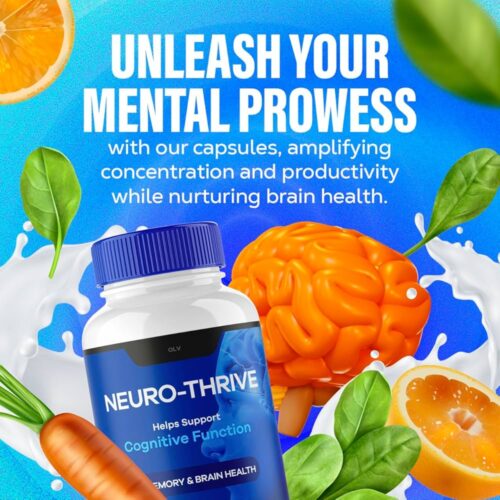As we get older, our bodies change a lot. These changes can affect how we move and heal. It’s important to know these changes to prevent injuries and recover well. We want to help middle-aged men stay healthy with science-backed methods.
Working with experts like Dr. John Spencer Ellis can improve your health and sex life. You can sign up on DietGuru.com to start.
After 40, we lose muscle, flexibility, and bone strength. This makes us more likely to get hurt during intense activities. To avoid injuries, it’s key to warm up and cool down right. Also, doing mobility exercises and foam rolling can help a lot.
These steps can cut injury risk by half. They also make your muscles more flexible and less sore. This means you can recover faster, in about 24-48 hours after hard workouts.
Doing dynamic stretches before working out can also help. It makes your muscles warm and blood flow better. This can lower injury risk by up to 25%.
Strengthening your core and glutes can also help a lot. It can cut down on common injuries by 40% in CrossFit. After hard workouts, light cardio can help your muscles recover faster, by 15-20%.
Eating foods that fight inflammation can also help your body heal. This can make recovery from injuries 30% faster.
Key Takeaways
- Proper warm-up and cool-down routines can reduce the risk of injuries by up to 50%.
- Implementing mobility exercises and foam rolling can enhance flexibility and reduce muscle soreness.
- Dynamic stretches before workouts can improve blood flow and muscle temperature, reducing injury occurrences.
- Targeted core and glute strengthening exercises can lead to a 40% reduction in common age-related injuries in CrossFit.
- Nutritional strategies, including anti-inflammatory foods, can support healing processes and reduce recovery time from injuries.
- Active recovery methods like light cardio can enhance muscle recovery rates by approximately 15-20% after strenuous exercises.
- Consuming protein and carbohydrates within 30-60 minutes post-workout can enhance muscle recovery, making it 50% more effective in replenishing glycogen stores.
Understanding the Aging Body’s Response to Exercise
As we get older, our bodies change a lot. We lose muscle, our heart works less efficiently, and our hormones change. These changes make it harder to recover from exercise. It’s key to adjust our workouts to avoid injuries and help our bodies heal.
Staying active is important for older adults. But, they face more risks of getting hurt while exercising. To stay safe, adding stretching and balance exercises like yoga or tai chi is a good idea.
Research shows that muscle makes up about 40% of our body weight. As we age, our muscles take longer to heal from exercise damage. Symptoms can last up to 14 days after stopping exercise. You can find out more about how inflammation affects aging health and fitness.
- Start slow and gradually increase the intensity and time of your workouts.
- Add exercises that improve balance and flexibility, like yoga or tai chi.
- Make sure to give your body enough time to rest between workouts.
- Listen to your body and take breaks to avoid pushing too hard.
By understanding how our bodies react to exercise as we age, we can lower injury risks. We can also improve recovery and keep our fitness and health high as we get older.
Essential Warm-up Protocols for Injury Prevention
Men should add a detailed warm-up to their workout plan to lower injury risk and boost performance. A good warm-up boosts blood flow, increases flexibility, and gets the heart ready for exercise.
Some key warm-up steps for injury prevention are:
- Light cardio like jumping jacks or squat jumps to get the heart rate up and blood flowing
- Dynamic stretching to better flexibility and movement range
- Static stretches to make muscles more elastic and ready for exercise
A good warm-up should last about 10-15 minutes. It should mix these activities. By doing this, men can lower injury risk and do better in their workouts.

Also, it’s smart to increase workout intensity by no more than 5% at a time. And, men should take rest days at least 1-2 times a week. This helps the body recover and prevents injuries.
| Warm-up Protocol | Duration | Benefits |
|---|---|---|
| Light Cardio | 5-10 minutes | Increases heart rate and blood flow |
| Dynamic Stretching | 5-10 minutes | Improves flexibility and range of motion |
| Static Stretching | 10-30 seconds per stretch | Enhances muscle elasticity and readiness for exercise |
Smart Training Strategies for Recovery and Injury Prevention
For men over 40, a smart training plan is key to staying fit and avoiding injuries. We focus on recovery and fitness. This includes making a plan just for you and using techniques that keep your muscles growing.
Studies show that a good training mix can help you recover faster and avoid injuries. It’s about knowing how often to train, picking the right exercises, and always pushing yourself a bit harder.
Key Components of a Smart Training Strategy
- Optimal training frequency to allow for adequate recovery time
- Exercise selection and modification to suit individual fitness levels
- Progressive overload techniques to challenge the muscles and promote growth
By using a smart training plan, men can boost their recovery and fitness. This not only keeps them healthy but also improves their mood and life quality.
| Training Component | Benefits |
|---|---|
| Strength Training | Improves muscle mass and bone density, reducing the risk of injury |
| Cardiovascular Exercise | Enhances cardiovascular health, improving overall fitness and recovery |
| Flexibility Work | Increases flexibility and range of motion, reducing the risk of injury |
Nutrition’s Role in Recovery After 40
As we get older, our bodies need more nutrients. This is for muscle repair, bone health, and overall wellness. Eating a balanced diet with anti-inflammatory foods, enough protein, and staying hydrated helps a lot. It supports the recovery process and lowers injury risk. Nutrition is key, even more so for men over 40, to help them recover better and stay healthy.
Key Nutrients for Recovery
Here are the nutrients you need for recovery:
- Protein: 1.6-2.5g/kg of body weight per day to aid in muscle repair and maintenance
- Complex carbohydrates: from whole grains, fruits, and vegetables to support the body’s energy needs
- Omega-3 fatty acids: found in salmon and walnuts, to reduce inflammation
- Antioxidant-rich foods: leafy greens, berries, and citrus to remove inflammation-promoting toxins
Hydration Strategies
Drinking enough water is vital. It keeps joints lubricated and helps nutrients reach injured areas. Drink lots of water and sports drinks to aid in recovery and keep your aging health in check.
Advanced Recovery Techniques for the Mature Athlete
Men should look into advanced recovery methods to boost their performance. These techniques help lessen muscle soreness and improve blood flow. They also help get rid of waste faster, leading to quicker recovery and better performance.
Some advanced recovery methods include foam rolling, wearing compression clothes, and using cryotherapy. These can be used along with rest and eating well to improve recovery. For example, foam rolling can ease muscle soreness and boost blood flow. Compression garments can also help blood flow and reduce swelling.
A study showed that cold water immersion (CWI) works better than contrast water therapy (CWT) and just resting. It reduces muscle soreness and keeps sprint performance up 48 hours after exercise. Advanced recovery techniques offer many benefits, and we suggest men try them to elevate their fitness.

- Reduced muscle soreness
- Improved circulation
- Enhanced removal of waste products
- Faster recovery
- Improved performance
| Recovery Technique | Benefits |
|---|---|
| Foam Rolling | Reduced muscle soreness, improved circulation |
| Compression Garments | Improved circulation, reduced swelling |
| Cryotherapy | Reduced muscle soreness, improved recovery |
Addressing Sexual Health and Energy Through Recovery Protocols
We know how vital it is to tackle sexual health and energy through recovery plans. As we get older, our bodies change, affecting our sex life and energy. Studies show that about 50% of people with spinal cord injuries can have orgasms. Up to 95% of men with spinal cord injuries face ejaculatory issues. But, the right recovery plans can help regain some erectile function and boost sexual health.
When it comes to sexual health and energy, hormone balance, stress control, and better sleep are key. Focusing on these can boost overall wellness, sex life, and energy. For instance, hormone optimization can help with libido and erectile function. Stress management can lower anxiety and enhance well-being.
Also, sleep quality enhancement is essential for health and wellness. It affects hormone balance, energy, and sex function. By valuing sleep and sticking to a routine, people can better their sex life and energy. By tackling these areas and adding recovery protocols to their daily life, individuals can actively improve their sexual health and energy.
Conclusion: Implementing Your Personal Recovery Strategy
Men can create a recovery plan that boosts their health and performance. This plan should include working with experts like Dr. John Spencer Ellis. It should also include proper warm-ups and smart training.
Improving sexual health is key, as it boosts confidence and overall well-being. By focusing on health, men can stay fit, avoid injuries, and live better lives.










